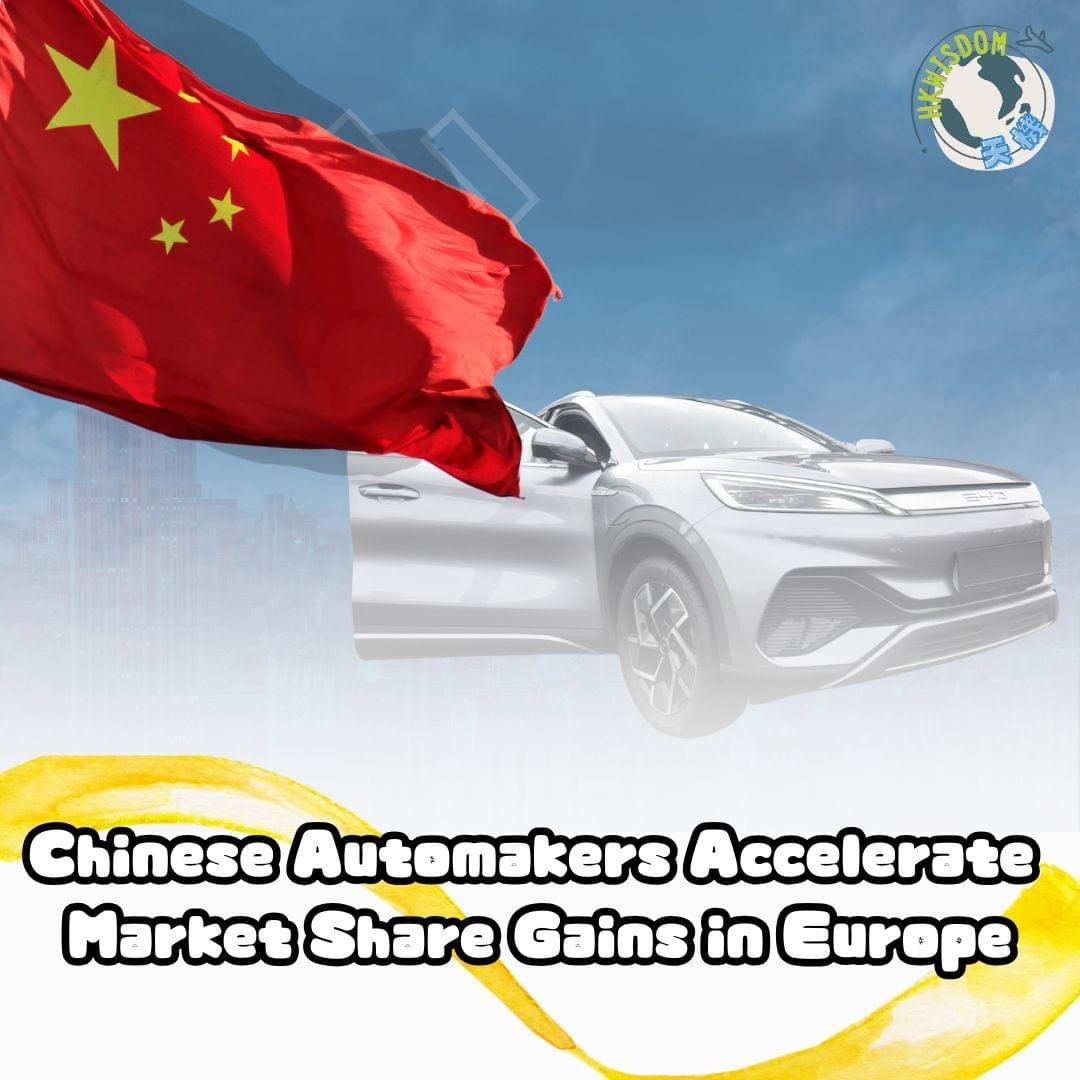
Recent preliminary data from market research firm reveals that Chinese automakers have significantly expanded their presence in the European market. In August 2025, sales of Chinese-brand vehicles in Europe doubled year-over-year, with their market share rising slightly from 5.3% in July to 5.4%, marking the fourth consecutive month above the 5% threshold. This compares to a market share of 2.9% in August 2024.
From January to August 2025, Chinese automakers sold a cumulative total of 430,000 vehicles in Europe, a 74% increase compared to the same period last year. Their market share over this period grew from 2.9% to 4.9%, making them a standout growth segment in the European automotive market.
Chinese electric vehicle (EV) manufacturers are challenging industry giants like Volkswagen and Tesla with competitive pricing, advanced battery technology, and rapid model iteration. Despite a slowdown in the overall European EV market, Chinese brands have bucked the trend, capturing a record 11% share of the European EV market by mid-2025. This surge was partly driven by a pre-tariff order rush ahead of the European Union’s imposition of additional countervailing duties—up to 35.3% on top of the existing 10% tariff—on China-made EVs exported to the EU, effective from late October 2024 for a five-year period. In response, Chinese automakers have pivoted toward promoting plug-in hybrid electric vehicles (PHEVs).
Chinese automakers demonstrated remarkable resilience, with vehicle registrations in Europe reaching approximately 43,500 units in August 2025, a 121% year-over-year surge. By offering a mix of pure EVs and PHEVs, these brands have successfully attracted price-sensitive consumers. During the same period, the European passenger car market recorded total sales of about 790,000 units, up 4.7% year-over-year.
Breaking down sales by powertrain, Chinese automakers sold 10,406 PHEVs in Europe in August, with their share of total sales rising from 4% a year ago to 25%. Pure EV sales grew 57% to 14,473 units but accounted for a reduced share of 35%, down from 44%. Hybrid electric vehicle (HEV) sales soared 190% to 7,176 units, increasing their share from 12% to 17%. Gasoline vehicle sales, meanwhile, dropped significantly from 35% to 21% of the total.
According to *China Automotive News*, the top five Chinese brands in Europe—SAIC’s MG, BYD, Chery’s Jaecoo and Omoda, and Leapmotor—accounted for over 80% of Chinese automakers’ sales in August. BYD led with a 230% sales increase to 10,498 units, driven by strong PHEV performance, particularly the Seal U PHEV, which sold 3,715 units and became the top-selling Chinese-brand PHEV in Europe that month. Chery recorded a 471% sales surge to 7,094 units, leveraging a multi-brand strategy with Jaecoo, Omoda, and its namesake Chery brand. Leapmotor, supported by its partnership with Stellantis’ European sales network, gained traction with its competitively priced T03 model, starting at €18,900, which appeals to urban consumers for its compact design and affordability.
Notably, BYD joined the European Automobile Manufacturers’ Association (ACEA) mainstream passenger car market statistics in July 2025, alongside SAIC Group, making them the only two Chinese automakers among the 18 tracked by ACEA. In August, SAIC Group and BYD recorded sales of 16,000 and 11,455 units, respectively, with year-over-year growth of 44.5% and 215.7%, ranking second and first in growth among ACEA-tracked manufacturers. From January to August, SAIC Group sold 192,433 vehicles (up 19.7%), while BYD sold 95,940 (up 280%).
Consumer sentiment in Europe is also shifting, as highlighted by Escalent’s *China Auto Brand Impact* survey. In 2025, 47% of European buyers considered purchasing Chinese vehicles, surpassing the 44% who considered American brands—a reversal from 2024, when 31% favored Chinese brands and 51% preferred American ones. Escalent’s Vice President of Automotive and Energy, KC Boyce, noted that geopolitical factors, including tariffs, trade agreements, and perceptions of the U.S. stance on the Russia-Ukraine conflict, are influencing European attitudes toward American brands. Price remains a key driver, with European buyers perceiving Chinese vehicles as more affordable, even when their objective performance is superior. Boyce added, “While not indicative of a strong or universal belief, European consumers increasingly view Chinese EVs as a more reliable purchase option.”